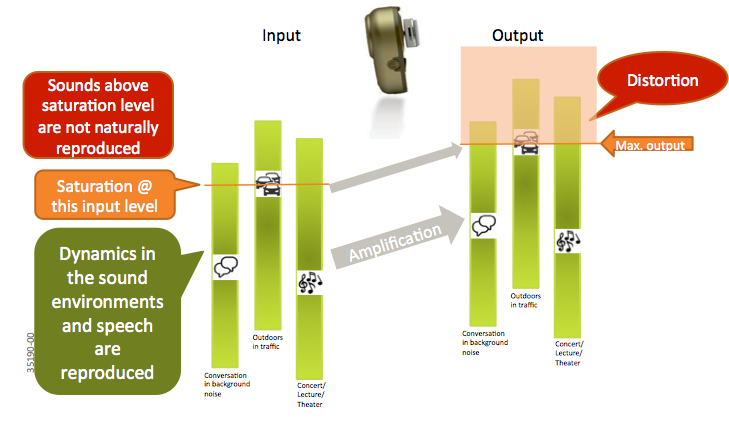Question
Do all bone anchored system users benefit from higher maximum output?
Answer
Yes. When patients with hearing loss who use bone anchored systems prioritize their challenges, they rank understanding speech in difficult situations as the biggest challenge, followed by unclear sound and distortion of sounds. Historically, with bone anchored systems, the maximum power output or maximum for output level (MFO) is low. The typical loudness discomfort level with a bone anchored device is around 95 dB. Until now, the MFO of a bone anchored hearing system has been well below that. It is only with the latest SuperPower generation of devices that we can get sufficient output to even start to approach 95 dB.
With a bone anchored device, we need sufficient force to vibrate the skull to reach the inner ear, but we also need to keep devices small enough to wear. With the size of bone anchored devices, we do not have to worry about output exceeding a patient's loudness discomfort level, or worse, damaging their hearing.
All bone anchored users can benefit from a higher maximum output. Why is that? It is because sound environments are dynamic. There is a great deal of variation in sound levels in everyday situations, and these situations also contain relatively high sound levels.
Think of a bone anchored device having an input side (the microphone) that receives these environmental signals, and an output side where the signal is transmitted to the user, after the input signal has been amplified by the device. The output signal is, of course, limited by the device's maximum output. In everyday situations, sound levels from very soft to very loud are being sent to the device (input), amplified, and reproduced at the output stage. You need a device with a wide dynamic range or sounds will be distorted.
A visual representation of this process is shown in Figure 1.

Figure 1. Sounds above saturation level are not naturally reproduced.
Compared to sound processors meant for a 45 dB HL fitting range, the Ponto 3 SuperPower has 10 dB higher maximum output (maximum force output level, MFO) and has a 65 dB HL fitting range. fitting range. The higher output means a larger proportion of the natural dynamic variations in everyday situations will be maintained. This is shown in Figure 2. You'll see that with a higher output, more of the dynamic range of everyday situations (represented by the green bars) are correctly reproduced. And, when higher gain is used in a device, saturation is reached more quickly, so having a higher output is especially important.

Figure 2. Ponto 3 SuperPower has 10 dB more output, and better maintains the natural dynamics of everyday situations.
Thank you for your question! For more information about fitting Ponto 3 SuperPower, view the course BrainHearing and Bone Anchored Devices: Why More Output Matters to All Users. More information is also available on the Oticon Medical Partner Page on AudiologyOnline, and at www.oticonmedical.com/us

